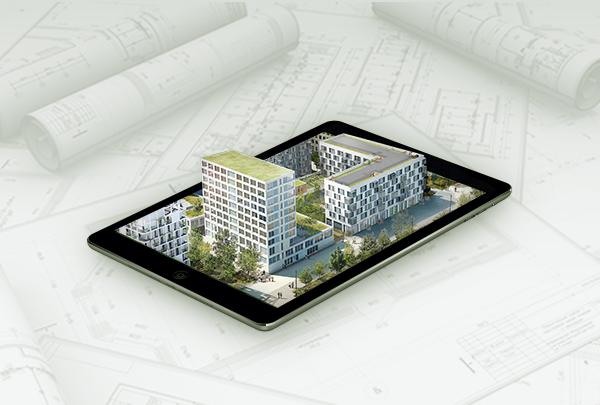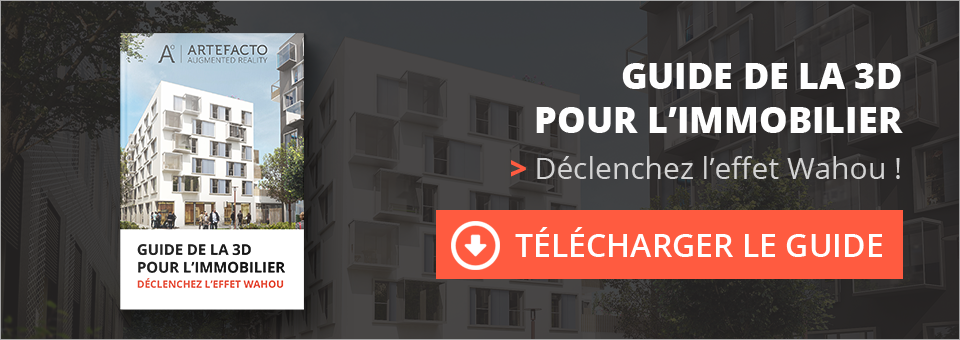Dans le secteur immobilier, l’arrivée d’internet a bouleversé les habitudes des clients et leurs comportements de recherches et d’achat. Les consommateurs sont de plus en plus mobiles, digital natives, connectés…
L’immobilier prend aujourd’hui le virage du digital, se réinvente, et cherche à optimiser l’expérience client en utilisant les meilleures technologies. C’est à ce besoin que répondent avec brio les nouvelles applications 3D pour l’immobilier !
Quel est l’intérêt d’une application 3D dans l’immobilier ?
Avec 1,6 million d’internautes qui se connectent chaque jour sur un site immobilier, la France est le 3ème pays au monde en termes de couverture pour l’internet immobilier. Les sites d’annonces se font une guerre féroce pour attirer des prospects, mais c’est Le Bon Coin qui remporte la bataille haut la main avec 14,9 % de la couverture internaute [1].
Pour se démarquer de la concurrence, il n’y a pas de secret, il faut donc innover, proposer une solution qui fasse la différence pour le client, plus efficace, plus immersive : la 3D !
Les applications de visites virtuelles ou de réalité augmentée sont bien plus que des solutions de communication (comme pourrait l’être un flyer par exemple). C’est un outil de recherche, de projection, de visite et d’aide à la décision !
Des exemples d’applications 3D dans l’immobilier
La réalité augmentée dans l’immobilier : aidez vos clients à visualiser le futur
La réalité augmentée est LA solution pour aider vos clients à se projeter. Directement sur le terrain encore en travaux, pointez la tablette vers le futur emplacement, et le logement apparaît, comme par magie !
Si vous êtes un constructeur de maisons ou un architecte, ces applications vous permettent de visualiser le futur projet dans son environnement actuel et réel.
Certains logiciels de réalité augmentée (comme par exemple la plateforme en ligne Urbasee) vous permettent de partager simplement le projet à vos futurs acquéreurs.
Ils peuvent ainsi retourner sur le terrain à construire, faire apparaître le projet d’un simple clic, et se promener autour… comme si la maison était là !
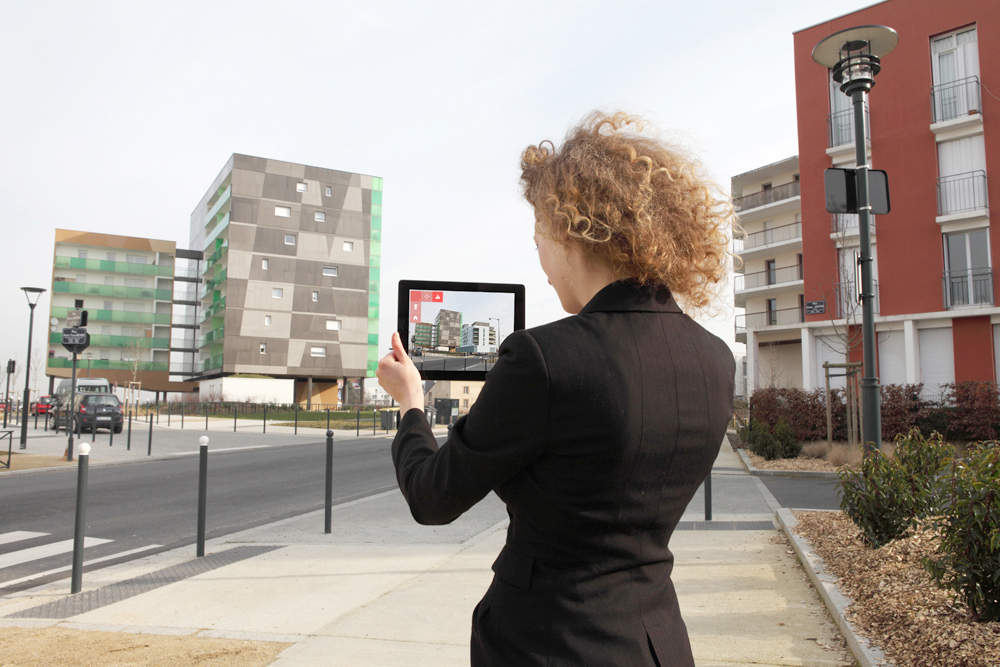
La réalité virtuelle pour personnaliser le futur bien
Si la réalité augmentée aide à la projection du bien dans son environnement actuel, la réalité virtuelle se met, en autres, au service de la personnalisation.
Via votre application, vous pourrez proposer différentes options : couleurs des murs, matériaux, agencement de l’intérieur, décoration, type de cuisine, terrasse extérieure, piscine…. Laissez le choix à votre client, faites du sur-mesure et séduisez vos clients !
Les applications 3D pour mieux commercialiser vos programmes immobiliers
#BÉNÉFICE : Un outil d’aide à la vente performant
Pour les promoteurs immobiliers, la 3D est ultra-performante pour commercialiser leurs nouveaux programmes. Les futurs acquéreurs visualisent le futur bâtiment, sa configuration, son emplacement, le cadre de vie, et choisissent plus facilement le logement idéal.
Grâce à ces applications 3D développées spécifiquement pour l’immobilier, vous vendez vos projets immobiliers plus rapidement ! Une commercialisation bien plus efficace que la vente sur plans.
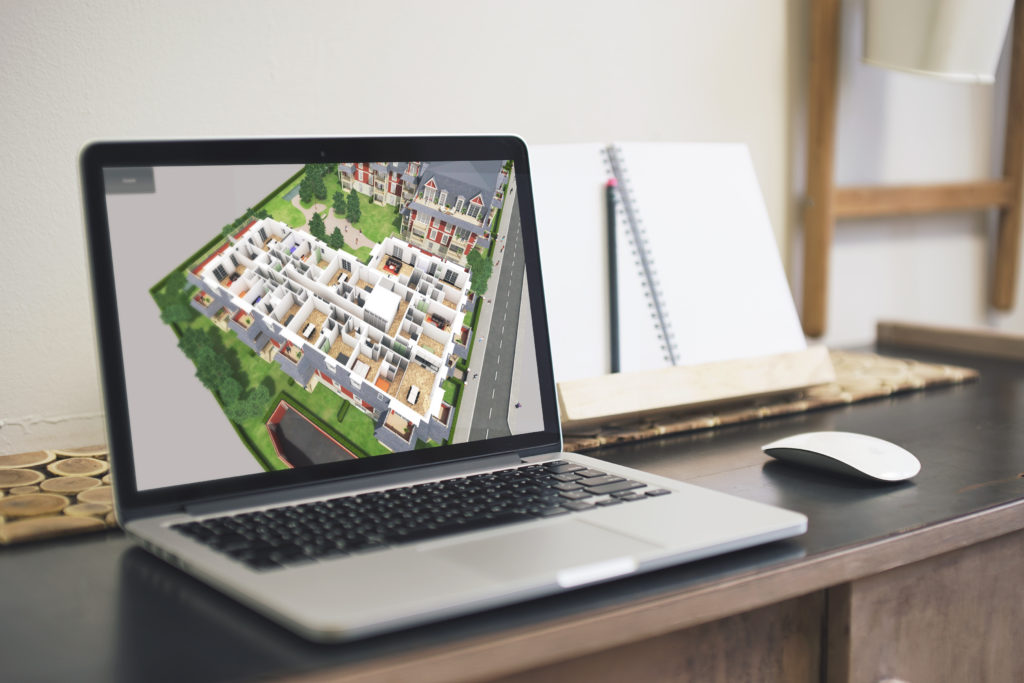
Un exemple concret d’application : la solution innovante Live 3D intuitive proposée par Seloger Neuf SeLoger Neuf, site leader en termes d’audience web en immobilier en France, continue d’optimiser l’expérience utilisateur des internautes en proposant des solutions toujours plus innovantes. En partenariat avec nos experts de la modélisation 3D à l’occasion du RENT 2016, le spécialiste de l’immobilier neuf lance la solution Live 3D intuitive. SeLoger Neuf, site leader en termes d’audience web en immobilier en France, continue d’optimiser l’expérience utilisateur des internautes en proposant des solutions toujours plus innovantes. En partenariat avec nos experts de la modélisation 3D à l’occasion du RENT 2016, le spécialiste de l’immobilier neuf lance la solution Live 3D intuitive.Ce module 3D permet aux internautes : -> De visualiser la disponibilité des lots en temps réel -> D’accéder aux plans des biens -> De visualiser virtuellement l’extérieur de la résidence avec la disposition des lots -> De réaliser des visites à 360° dans des lots types du programme, en totale immersionLe module web de visualisation 3D & 360° sera disponible également sur mobile, terminal de plus en plus utilisé au cours de leur parcours client par les internautes. |
Des applications de maquettes 3D pour illustrer vos projets de construction sous différents points de vue
Les maquettes 3D temps réel vous permettent une navigation tactile dans un modèle 3D, en intérieur ou en extérieur.
Différents points de vue s’offrent à vous pour visualiser un bien ou un projet :
-> Point de vue piéton : pour une vue rapprochée, plus « humaine »
-> Point de vue aérien : pour une vue éloignée, avec possibilité de rotation, de zoom
-> Trajet automatique
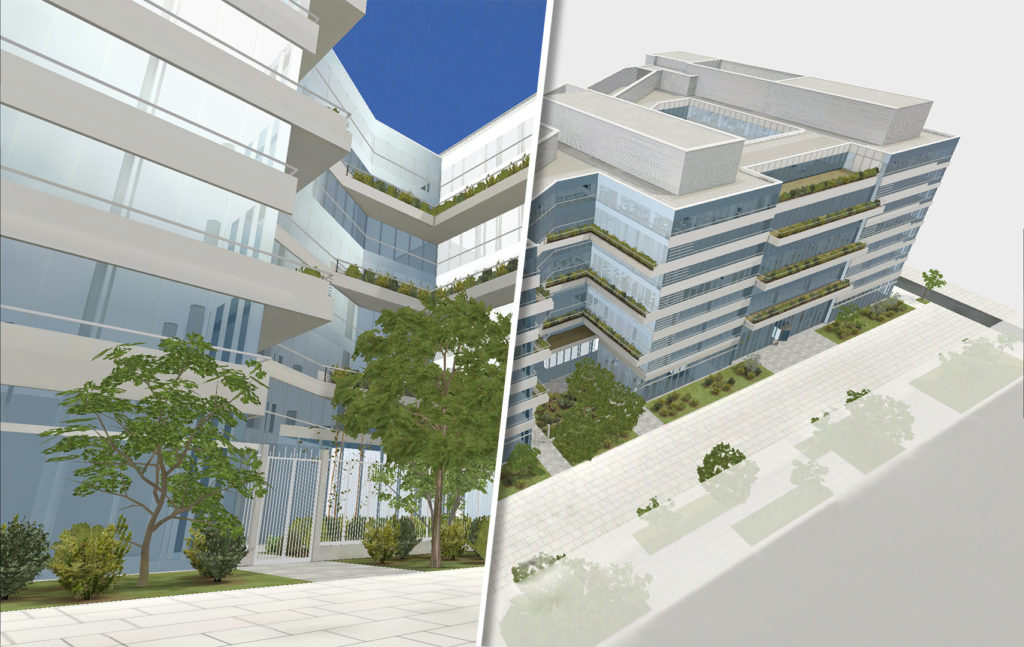
Une visualisation 3D grâce à un écorché de niveaux permet également de visiter un immeuble, étage par étage.
Il est alors possible de visualiser l’ensemble des pièces, leur agencement et leur répartition.
Pour les programmes immobiliers neufs, vos clients visualisent immédiatement le logement et peuvent le visiter en détail : finition, aménagement des pièces… mais également quartier alentour, facilité d’accès, cartographie des lieux etc.
Le promoteur immobilier augmente ainsi ses chances de vente par rapport à une vente classique sur plan.
Il rassure ses futurs acquéreurs en les aidant à se projeter dans leur futur logement et futur quartier.

